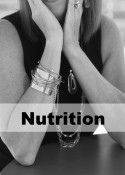Wellness Tips, Healthy Recipes, Inspirations, Lifestyle, Nutrition + More
5 Easy Ways to Transition to a Plant Based Diet
Easy Ways to Transition to a Plant-Based Diet
The other night I went to the Michigan premiere of Eating You Alive documetary. This movie featured leading medical experts and researchers and takes a scientific look at the reasons we’re so sick, who’s responsible for feeding us the wrong information and how we can use whole-food, plant-based nutrition to take control of our health—one bite at a time.
A whole-food, plant-based diet is centered on whole, unrefined, or minimally refined plants. It’s a diet based on fruits, vegetables, tubers (potato’s and root vegetables), whole grains, and legumes (alfalfa, clover, peas, beans, lentils, mesquite, carob, soybeans, peanuts, and tamarind) and it excludes or minimizes meat (including chicken and fish), dairy products, and eggs, as well as highly refined foods like bleached flour, refined sugar, and oil.
There are many good reasons to increase the amount of plant foods in your diet. Maybe you want to lose weight, or ward off certain diseases, or just boost your nutrient intake; or maybe you want to move away from eating animal foods for ethical reasons. Either way, by taking it one step at a time, you have a better chance of it creating change that sticks!
A Whole-Food, Plant-Based Diet Is Not a Diet of Vegetables Alone :~)
You may have see that people living a plant-based lifestyle eat lots of spinach, kale, and other greens. This is a primary basis for many of the plant-based meals. But if you think we live only on leafy and raw vegetables, nothing could be further from the truth.
While I certainly recommend you eat a lot of leafy vegetables, they aren’t the energy source on your whole food plate. We need starchy foods for energy.
Starch-Based Foods and Fruits are the Basis of the Whole-Food, Plant-Based Diet
Instead of building your meals around meat, the center of your plate is now going to be the good starch-based foods most of us have pushed to side dishes. Think about this, these are the foods that people around the world have thrived on for generations (like grandma).
These starchy foods include tubers like potatoes and sweet potatoes; starchy vegetables like corn and peas; whole grains like brown rice, millet, quinoa, and buckwheat; and legumes like chickpeas, black beans, kidney beans, and lima beans. What you’ll start to learn is that they can prepared in so many ways and without oil and dairy, like we are used to. In addition to starch-based foods, you can enjoy as much whole fruit as you like. Here are some easy ways to transition yourself to a plant-based diet with success.
5 Easy Ways to Transition to a Plant-Based Diet:
- Pick a day to start and add more plants to your plate. Your first step is to commit to the transition. If your plate previously was filled with about 30% plant-based foods, aim to double that. Each week, increase the percentage by 10% until you are filling your plate entirely with wholesome plant foods. Include nuts and seeds as a beneficial source of healthy fat and protein.
- Cut out animal foods you didn’t really eat (or enjoy) anyhow. After all, if you never ate pork, it’s easy to eliminate that from your diet without feeling much impact!
- Invest in some good, easy, and practical vegan cookbooks. Or, scour the web for recipes that sound delicious and jive with your lifestyle. There’s no shortage of material on the subject, so camp out in the cookbook aisle of your favorite bookstore until you find 2-3 books that make you drool. When you are in the transition phase, you may want to check out Mark Bittman’s bestselling book, VB6, which stands for “Vegan Before 6 pm,” in which he features vegan and veggie-forward flexitarian meals to get you started on your path. One of my favorites is The China Study cookbook.
- Stock your kitchen with whole, healthy plant foods. Don’t fall into the trap many vegetarians and vegan do by adding lots of processed foods to your diet—just because they don’t contain animal products doesn’t mean they are healthy (especially if the ingredient list is full of words you don’t recognize or can’t pronounce!). Shopping at the farmer’s market and focusing on the bulk section of your organic grocery store should give you everything you need to successfully go vegan! And you’ll find it’s a LOT less expensive than buying pre-packaged entrees and snacks.
- Find support by connecting with others. Seek out blogs, like mine here, and online groups dedicated to healthy vegan lifestyle. Or, find a coach who can support you on your journey (that’s me). Contact me for a free 30 minute consultation and chat on how I can help you.
I’ll be sharing alot more on living a whole food plant-based lifestyle and share many recipes, tips and more to help you succeed.
Be sure you are on my mailing list so you don’t miss anything.
And join my Nutrition Lounge where I share even more. It’s FREE and FUN. Click Here.
Be Happy
Be Healthy
Be Powered by Nutrition™










